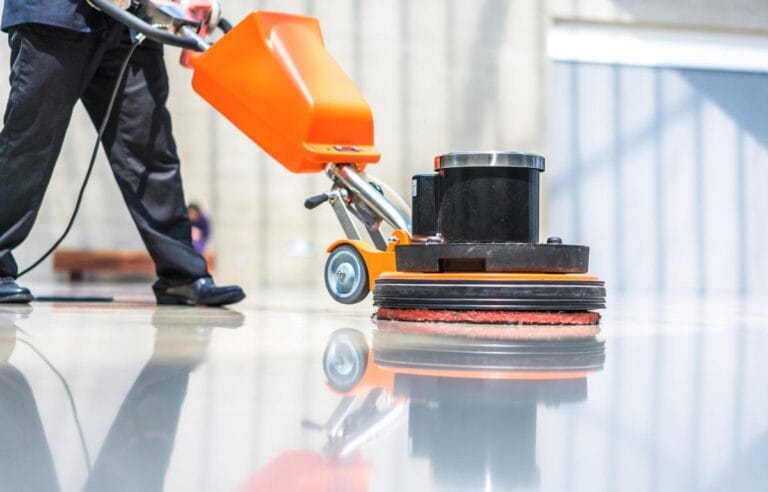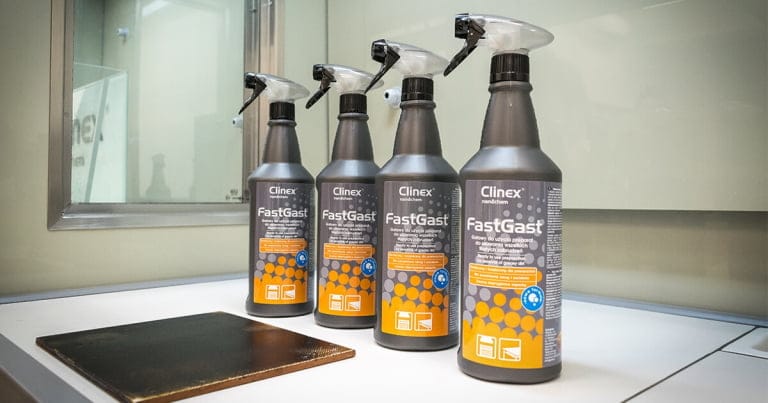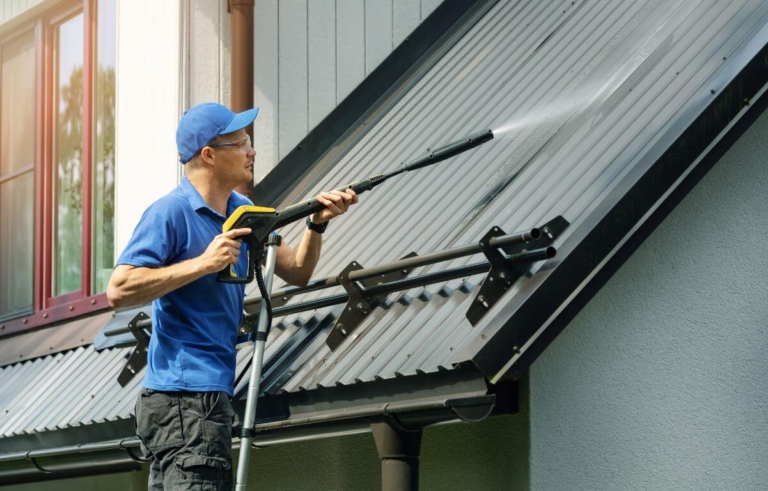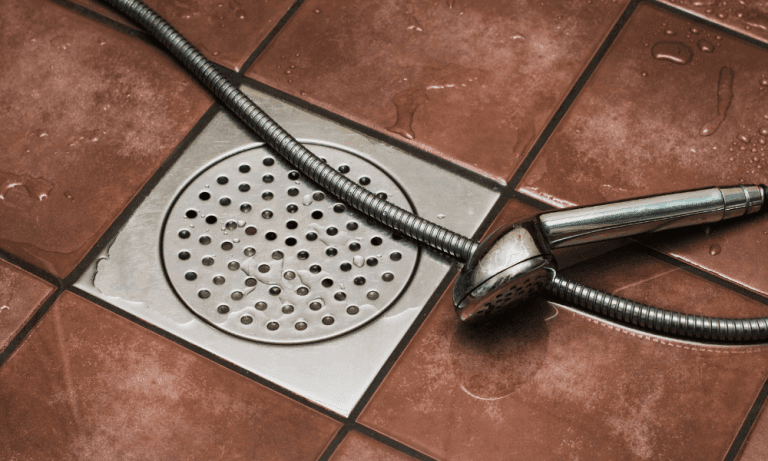Limescale build-up in the toilet bowl can affect the hygiene and aesthetics of the bathroom. Regular descaling is essential to maintaining the proper functioning of the toilet. Neglecting this can lead to unpleasant odours, blockages and damage to the ceramics, which is associated with additional repair costs.
Why is it worth de-scaling your toilet regularly?
Regular descaling of your toilet is not only a matter of aesthetics, but also of health. Why? The limescale build-up can become a breeding ground for bacteria that is difficult to remove and can affect the health of users. In addition, limescale can lead to blockages in the sewage system, which can require expensive repairs and damage the toilet.
What are the consequences of neglecting limescale in the toilet bowl?
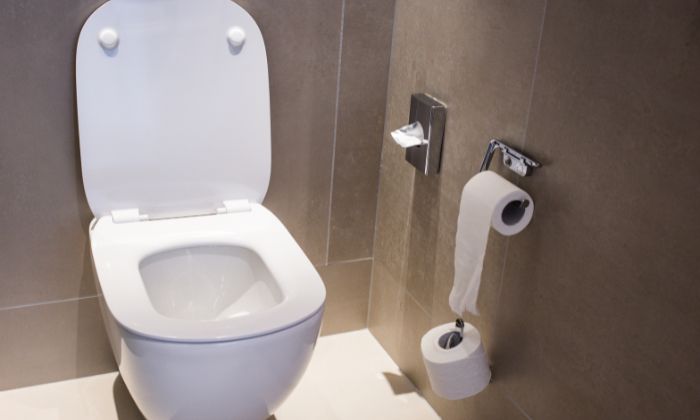
Neglecting to remove scale from your toilet bowl can lead to:
- Difficult to remove blockages that may require professional intervention.
- Unpleasant odors that may reduce the comfort of using the bathroom.
- Damage to ceramics and fittings, which may result in the need for expensive repairs or replacement of components.
- Increased risk of growth of bacteria and molds that may pose a health risk.
Preparation for descaling the toilet
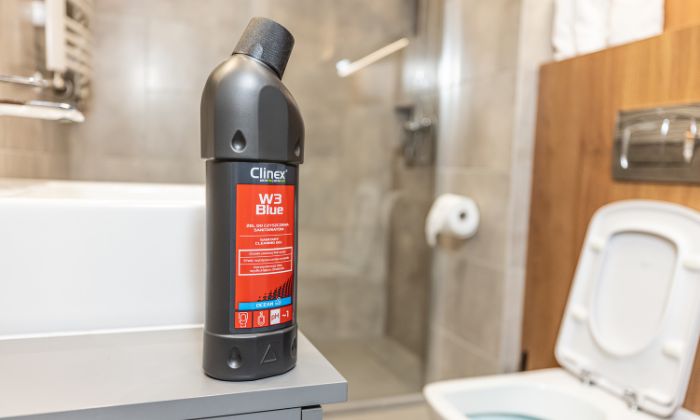
Necessary tools and cleaning products
To effectively remove limescale from your toilet, you will need:
- Protective gloves that protect your skin from harmful chemicals.
- Professional preparation for removing limescale.
- Toilet brush.
What is the best way to remove scale from a toilet bowl?
When choosing a product to remove scale from toilet bowls , it is worth choosing professional chemicals . Why is it so important? Specialist preparations are distinguished by their greater strength, thanks to which they are more effective in cleaning. In addition, they provide savings thanks to their greater concentration. Which preparation to choose? An excellent choice will be Clinex W3 Blue , which effectively removes deposits, rust and water scale. In addition, its special formula without chlorine allows for the safe removal of scale below the water line, as well as other deposits.
Safety while cleaning the toilet
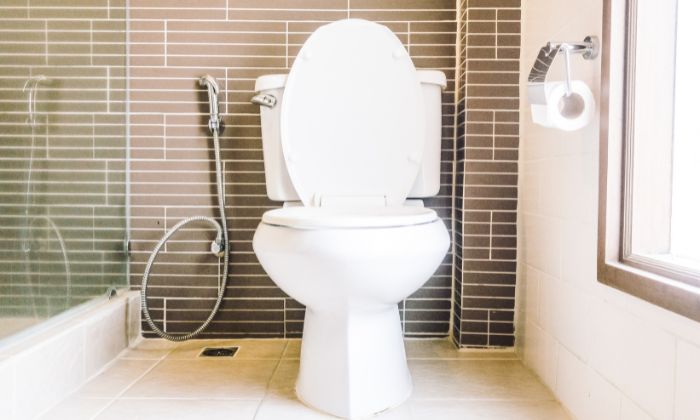
When cleaning the toilet, always wear protective gloves to avoid skin contact with harsh chemicals. It is also important to ensure that the room is well ventilated. This will help avoid inhaling fumes. Additionally, before starting to clean, it is worth reading the instructions on the product label to use it according to the manufacturer’s recommendations.
How to remove limescale from a toilet below the waterline with Clinex W3 Blue?
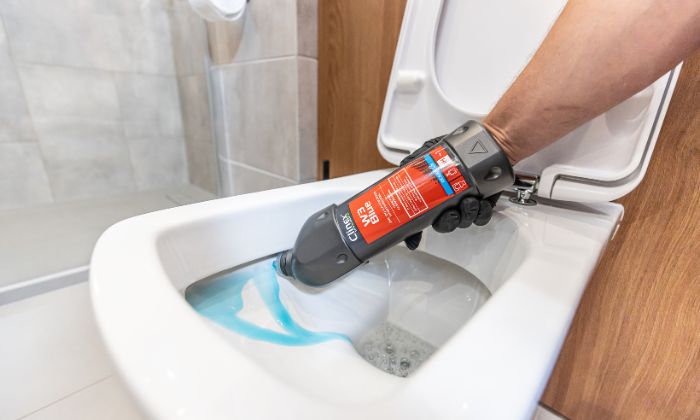
So let’s move on to the most important point, which is removing scale from the toilet below the waterline using the professional Clinex W3 Blue gel. How to do it?
- Shake Clinex W3 Blue before use.
- Apply the product to the surface. The gel will automatically flow below the water line.
- Wait about 1 minute.
- If necessary, use a special brush.
- Flush the toilet bowl thoroughly with water.
What if the scale in the toilet does not disappear? If necessary, you can extend the time the product remains on the surface or repeat the procedure.
Watch the Clinex EDU episode on toilet scale removal
Why you shouldn’t use chlorine to clean your toilet?
Chlorine is often recommended for removing coatings from shells, but in reality, it is not a good method. Why? First of all, chlorine optically whitens the deposits instead of removing them. This means that they are still there. In addition, chlorine is an irritant. If used frequently, it can irritate the respiratory tract.
Prevention: how to prevent scale formation in the toilet?
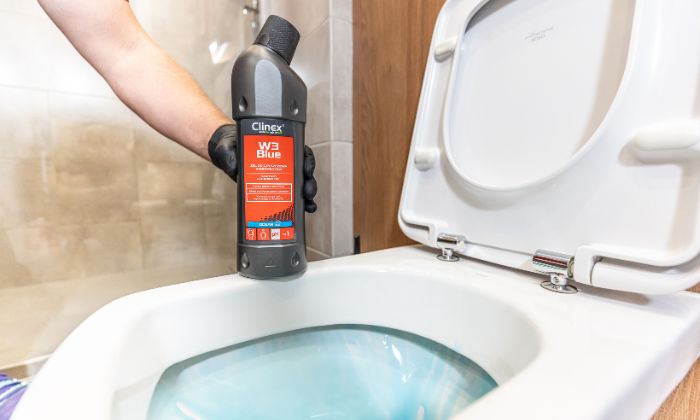
How to prevent limescale from building up in the toilet bowl ? The answer is to clean the toilet regularly using appropriate cleaning agents. It is therefore worth using Clinex W3 Blue regularly to maintain cleanliness and hygiene.
How often should you clean your toilet? At least once a week. This regularity prevents the build-up of deposits and helps keep your toilet in perfect condition.
What to avoid when cleaning your toilet?
- mixing with other chemicals,
- use on materials with damaged enameled or chrome-plated surfaces,
- leaving cleaning products on for too long.
What are the consequences of improper descaling?
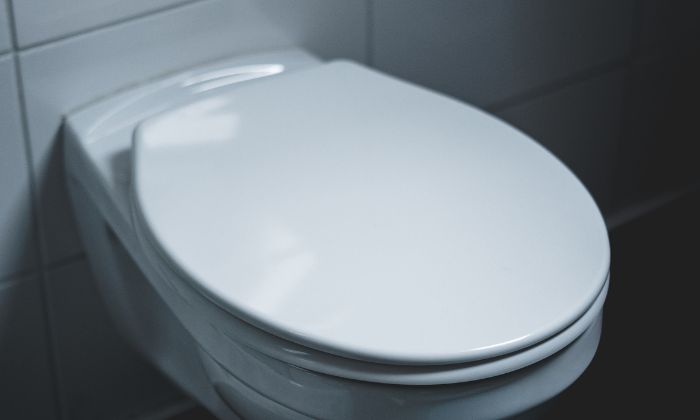
Improper descaling of the toilet bowl can lead to:
- damage to ceramics.
- ineffective removal of deposits.
- the formation of permanent stains.
Summary
Regular descaling of the toilet is essential for maintaining the hygiene and aesthetics of the bathroom. Using appropriate cleaning agents such as Clinex W3 Blue and following the cleaning recommendations ensures effective and safe removal of deposits.
Zobacz też:


